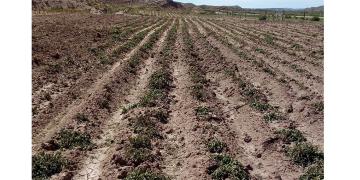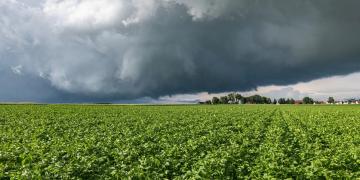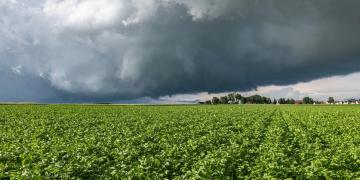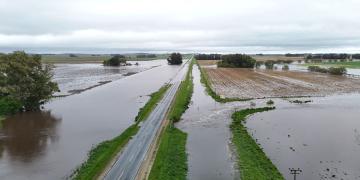Irán: IRAN IS BUILDING A STOCKPILE, OF POTATOES
When critics of then Iranian President Mahmoud Ahmadinejad wanted to target him ahead of the country’s 2009 presidential elections, they would shout, “Death to potatoes!” in reference to the controversial leader’s history of distributing the root
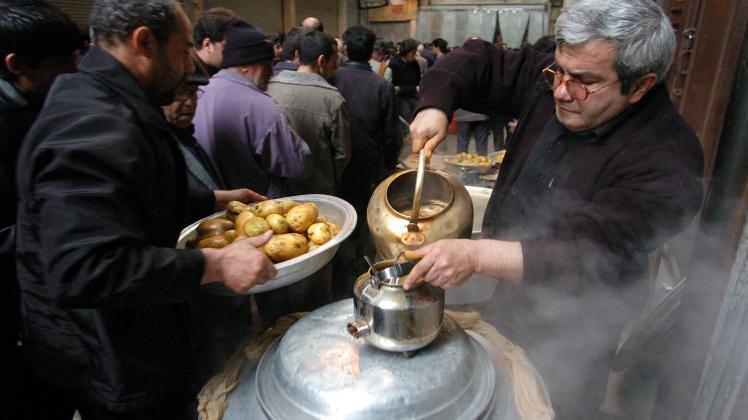
“We would chant, ‘We don’t want potatoes,’” recalls Jonathan Sameyach, an Iranian opposed to Ahmadinejad, who left office in 2013. Potatoes have since faded from Iranian politics.
Until now, that is. As American sanctions choke Iran’s economy, the country is increasingly looking to spuds as a cost-effective alternative to the traditional imports that have fed many Iranians. In 2017, Iran imported 1.2 million tons of rice, 1.3 million tons of barley and 9.5 million tons of corn, but several top agribusinesses have since stopped selling to the country for fear of violating U.S. sanctions. In February, photos emerged of ordinary Iranians forced to stand in long queues for subsidized frozen meat due to rising prices.
Amid growing worries over food shortages, the Iranian government is doubling down on production of potatoes to ensure that the carb-rich vegetable is available to the masses, as it seeks to beat back the threat of social unrest because of the economic crisis. Iran has increased its potato production by more than 20 percent since 2009, when it grew 4.1 million tons. It has consistently produced 5 million metric tons of potatoes since 2015, making the potato a reliable go-to food for the regime in this moment of crisis.
IRAN’S AGRICULTURAL POLICY HAS ALWAYS EMPHASIZED FOOD SECURITY AND SELF-SUFFICIENCY BECAUSE OF THE FEAR THAT SANCTIONS WILL STRANGLE IRAN.
HOOSHANG AMIRAHMADI, PROFESSOR OF INTERNATIONAL DEVELOPMENT, RUTGERS UNIVERSITY
Several provinces — Chaharmahal and Bakhtiari, Hamadan, Khorasan and West Azerbaijan — saw an increase in production last year. In July, Iran’s deputy agriculture minister said the country’s farmers are expected to produce 5.1 million tons of potatoes this year — despite a flood that decimated large parts of the country’s farmland, including more than 660,000 acres in the province of Golestan alone. Had the flooding not occurred, Iran would have been looking at a record yield.
Gettyimages 526306960
Agricultural workers in Chaharmahal province.
SOURCE ANDIA/GETTY
In the province of Ardabil, meanwhile, a research group is studying how to further increase productivity. And in March, the Iranian government banned the export of potatoes to ensure that this supply reaches the domestic market, which is becoming more reliant on cheap vegetables.
“Iran’s agricultural policy has always emphasized food security and self-sufficiency because of the fear that sanctions will strangle Iran,” says Hooshang Amirahmadi, a professor of international development at Rutgers University and an expert on Iran’s economy. “Because potatoes are easy to grow, they fit this model and have become a commodity among the lower middle class.”
The potato is believed to have first reached Persia only in the early 1800s, brought by a British diplomat. But it has since become a key ingredient in several popular Iranian dishes, including variations of the eggplant-based kuku and rice-based tahdig. Today, Iran has more than 395,000 acres of farmland dedicated to potatoes, topping the 313,000 acres under cultivation in Idaho, the leading American state growing the crop. Iran is the 13th-largest potato producer in the world.
The decline in the value of the Iranian rial by 30 percent over the past two years because of American sanctions has made it more lucrative for Iranian merchants to sell potatoes abroad, where they get paid in more-stable currencies. “The currency depreciation encourages exports of agricultural products to neighboring countries,” says Mohammad Bakhshoodeh, head of the department of agricultural economics at Shiraz University.
Iran’s exports of potatoes rose 12 percent from 2017 to 2018, driving a spike in food prices within the country and rendering even potatoes too expensive for many. “Iranian merchants can make far more money selling potatoes to Iraq than in Iran,” says Djavad Salehi-Isfahani, a professor of economics at Virginia Tech and a senior fellow at the Brookings Institution.
Food food
Traditional Iranian dishes chelo kebabs (top) and potoato tahdig with rice.
SOURCE SHUTTERSTOCK
That’s why the ban on the export of potatoes became critical for the government of Iranian President Hassan Rouhani. And so far it’s working at keeping potato prices under control. Even with a doubling of prices in July, a kilo of potatoes costs only $0.70 in Iran, compared to around $2.55 per kilo in the United States. “They are relatively affordable and feed everyone,” says Sina Azodi, an adviser at Gulf State Analytics. “Iranian officials want to make sure that the market does not face a shortage of potatoes because it may create more dissent if the prices go higher.”
The long queues for meat and the relative availability of potatoes is manifesting in changes in Iranian diets, say experts. “Iranians used to eat a lot of beef, but it became too expensive,” says Amirahmadi. Now, he adds, they’re “increasingly going vegetarian since vegetables, such as potatoes, are less expensive.”
The devastating flood this year demonstrated the limitations for Iran in being so dependent on domestic agriculture, and on one crop in particular. By blocking exports that earn crucial revenue, Iran also isn’t helping its macroeconomic indexes. But during what is effectively a crisis akin to a war, relatively easy access to the potato remains the Iranian regime’s best bet to keep a sanctions-weary population on its side. At the least, potatoes will prevent starvation. “If sanctions continue, potato production can be effective in supplying minimum and basic calories,” says Mahmoud Haji Rahimi, an assistant professor of agricultural economics at the University of Kurdistan.
And even if sanctions further raise the cost of potatoes in Iran, the root vegetable will likely remain the best, most affordable option for many Iranians. “Potatoes aren’t historically Iranian,” says Kevan Harris, a professor of sociology at the University of California, Los Angeles, who specializes in Iran’s welfare policies. “But they are cheap.”
Austin Bodetti, OZY AuthorContact Austin Bodetti
Fuente: https://www.ozy.com/fast-forward/iran-is-building-a-stockpile-of-potatoes/96335

